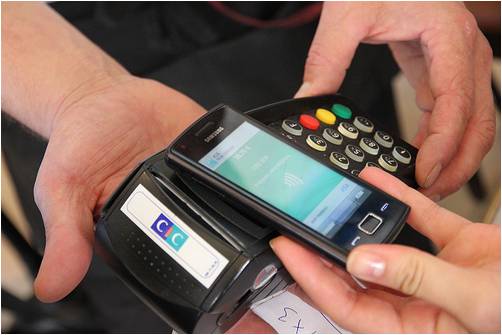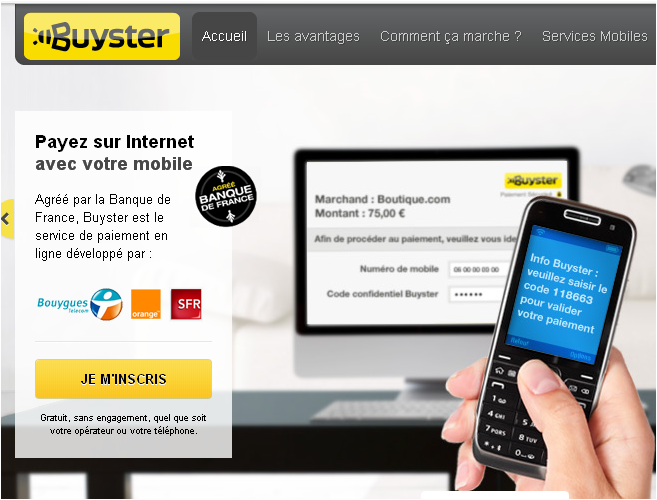Mobile Banking And Payment Innovation In France
 This is a guest post from Myriam Da Costa, a researcher serving eBusiness & Channel Strategy professionals.
This is a guest post from Myriam Da Costa, a researcher serving eBusiness & Channel Strategy professionals.
France has been quick to embrace mobile banking. Banks like BNP Paribas and Société Générale were among the pioneers of mobile banking in Europe and since 2009, all of the big French banks have launched iPhone mobile banking apps, so most French banks now offer several forms of mobile banking. The first wave of mobile banking was about getting the basics down and offering customers functionality like balances, transaction histories and SMS alerts. The second wave now focuses on money transfers and payments.
As we wrote in our report on The State Of Mobile Banking In Europe 2012, mobile banking is the foundation for mobile payments. France's banks and mobile operators are moving fast to seize the opportunity. In the past two years there has been a wave of new mobile payment initiatives in France: Buyster, Cityzi, Kwixo, Kix and S-money.
 Cityzi. The Association Française du Sans Contact Mobile (a not-for-profit association which is coordinating the technical development and promotion of Cityzi) launched Cityzi in Nice in May 2010 and has gradually rolled it out to other cities in France. The project was developed in partnership with mobile operators (Bouygues Telecom, Orange, SFR and NRJ Mobile), transport companies, banks (such as BNP Paribas, Crédit Agricole, Société Générale and Crédit Mutuel-CIC) and merchants to pioneer a wide-scale commercial deployment of Near Field Communication mobile contactless payments. Users equipped with NFC Cityzi mobile phones can pay for in-store purchases and transport tickets using their phone, as well as gaining loyalty points when shopping at participating stores. In addition to mobile payments, Cityzi SIM cards can now be used to interact with street furniture in order to obtain local information, set parking ticket machines or use as a travel card for public transport. One year after Cityzi was launched, the system had registered a disappointing 2,800 transactions in Nice for 3,300 users. The service is live in Nice and Strasbourg and being rolled out to Marseille, Caen, Lille and Bordeaux as well as other parts of France
Cityzi. The Association Française du Sans Contact Mobile (a not-for-profit association which is coordinating the technical development and promotion of Cityzi) launched Cityzi in Nice in May 2010 and has gradually rolled it out to other cities in France. The project was developed in partnership with mobile operators (Bouygues Telecom, Orange, SFR and NRJ Mobile), transport companies, banks (such as BNP Paribas, Crédit Agricole, Société Générale and Crédit Mutuel-CIC) and merchants to pioneer a wide-scale commercial deployment of Near Field Communication mobile contactless payments. Users equipped with NFC Cityzi mobile phones can pay for in-store purchases and transport tickets using their phone, as well as gaining loyalty points when shopping at participating stores. In addition to mobile payments, Cityzi SIM cards can now be used to interact with street furniture in order to obtain local information, set parking ticket machines or use as a travel card for public transport. One year after Cityzi was launched, the system had registered a disappointing 2,800 transactions in Nice for 3,300 users. The service is live in Nice and Strasbourg and being rolled out to Marseille, Caen, Lille and Bordeaux as well as other parts of France
 Kwixo. Crédit Agricole's Kwixo mobile payment service, which launched in June 2010, allows person-to-person (P2P), business-to-business (B2B) and person-to-business (P2B) payments, but doesn't offer a way to pay merchants in stores. The user doesn’t need to be a client of Crédit Agricole and there's both an Android and an iPhone app. She just has to subscribe to the service on the dedicated website with her email address or mobile phone number. Kwixo allows users to pay immediately or on credit. It works in a similar way to, and thus competes directly with, PayPal. To encourage further innovation, Crédit Agricole has unveiled its own application marketplace, giving developers access to a software development kit (SDK) with which to build their own mobile and Web tools.
Kwixo. Crédit Agricole's Kwixo mobile payment service, which launched in June 2010, allows person-to-person (P2P), business-to-business (B2B) and person-to-business (P2B) payments, but doesn't offer a way to pay merchants in stores. The user doesn’t need to be a client of Crédit Agricole and there's both an Android and an iPhone app. She just has to subscribe to the service on the dedicated website with her email address or mobile phone number. Kwixo allows users to pay immediately or on credit. It works in a similar way to, and thus competes directly with, PayPal. To encourage further innovation, Crédit Agricole has unveiled its own application marketplace, giving developers access to a software development kit (SDK) with which to build their own mobile and Web tools.
 Buyster. Launched by mobile operators Bouygues Telecom, Orange and SFR in February 2011 and approved by the Banque de France, Buyster is primarily designed to for online payments, enabling users to pay for online transactions without releasing their bank details to a merchant. Users register online and link their bank card to either their fixed line number or mobile phone number. This solution aims to make online transactions more secure. The system is supported by some big online retailers in France, including Aquarelle, Brandalley, Darty and Rue du Commerce.
Buyster. Launched by mobile operators Bouygues Telecom, Orange and SFR in February 2011 and approved by the Banque de France, Buyster is primarily designed to for online payments, enabling users to pay for online transactions without releasing their bank details to a merchant. Users register online and link their bank card to either their fixed line number or mobile phone number. This solution aims to make online transactions more secure. The system is supported by some big online retailers in France, including Aquarelle, Brandalley, Darty and Rue du Commerce.
 Kix. In November 2011, BNP Paribas partnered with mobile operator Orange to launch a suite of mobile banking and payment services called BNP Paribas Mobile. Among these services are Kix, a mobile payment application which enables customers to pay for daily purchases using NFC Cityzi mobiles, and My Transfers, a mobile app that lets users send money from their mobile to anyone, including people who are not BNP Paribas customers.
Kix. In November 2011, BNP Paribas partnered with mobile operator Orange to launch a suite of mobile banking and payment services called BNP Paribas Mobile. Among these services are Kix, a mobile payment application which enables customers to pay for daily purchases using NFC Cityzi mobiles, and My Transfers, a mobile app that lets users send money from their mobile to anyone, including people who are not BNP Paribas customers.
- S-money. The new S-money electronic wallet from BPCE (Banque Populaire and Caisse d’Epargne) launched in July 2012 allows users to transfer money to family and friends, and pay small businesses. S-money users will be able to send money to anyone and pay online and in stores. S-Money will be opened to everyone but will be trialled first with BPCE clients and rolled out in four French cities: Nantes, Rennes, Toulouse and Bordeaux this month, with a national launch planned for 2013. The payee doesn’t need to be a Banque Populaire or Caisse d’Epargne customer.
Those mobile payments projects initiated by banks and mobile operators in France attest to the strong desire to take a lead in mobile banking and payments. The mobile payment market in France is expanding rapidly and competition is fierce. But there are two different approaches: some banks have adopted NFC-based mobile contactless payments while others have chosen to launch Internet-based mobile payment apps. Both depend on persuading merchants and customers to adopt. We expect the Internet-based systems to grow faster. As Denée Carrington wrote on her blog: hardware-agnostic mobile digital wallets face fewer hurdles than NFC-based wallets and will have faster adoption.
We'd love to hear your thoughts on mobile banking and payments innovation below.